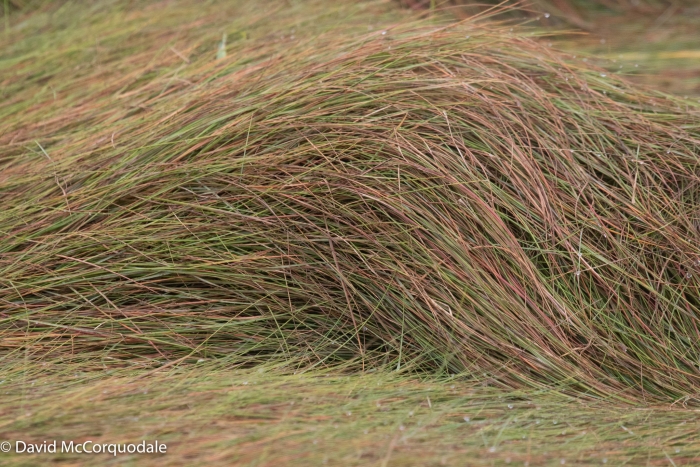Saltmeadow Cordgrass
(Sporobolus pumilus)
Saltmeadow Cordgrass (Sporobolus pumilus)
/
/

David McCorquodale
CC BY 4.0
Image By:
David McCorquodale
Recorded By:
Copyright:
CC BY 4.0
Copyright Notice:
Photo by: David McCorquodale | License Type: CC BY 4.0 | License URL: http://creativecommons.org/licenses/by/4.0/ | Rights Holder: David McCorquodale | Publisher: iNaturalist | Date Created: 2021-09-13T10:40:20-07:00 |

















































Estimated Native Range
Summary
Sporobolus pumilus, commonly known as saltmeadow cordgrass or salt hay, is a perennial grass native to coastal salt marshes and intertidal zones in eastern North America. It thrives in the upper areas of brackish coastal salt marshes, where it forms an integral part of the marsh ecosystem, stabilizing soil and providing habitat for wildlife. This species typically grows in thick mats reaching 30–60 cm in height. Its slender, wiry stems are green in the spring and summer, transitioning to light brown in late fall and winter. The deep purple flowers bloom from June to October, adding subtle color to the marsh landscape before turning brown in winter.
Saltmeadow cordgrass is valued for its ability to thrive in saline environments, making it an excellent choice for coastal restoration projects and erosion control. It is also used in ornamental water gardens and naturalized areas where its low maintenance and tolerance for flooding and salt spray are beneficial. While it prefers full sun, it can tolerate a range of water conditions and soil types, from fast to slow drainage. However, caution is advised when planting Sporobolus pumilus outside its native range, as it can become invasive, particularly in regions like California. It is important to consult local guidelines before cultivation to prevent ecological disruption.CC BY-SA 4.0
Saltmeadow cordgrass is valued for its ability to thrive in saline environments, making it an excellent choice for coastal restoration projects and erosion control. It is also used in ornamental water gardens and naturalized areas where its low maintenance and tolerance for flooding and salt spray are beneficial. While it prefers full sun, it can tolerate a range of water conditions and soil types, from fast to slow drainage. However, caution is advised when planting Sporobolus pumilus outside its native range, as it can become invasive, particularly in regions like California. It is important to consult local guidelines before cultivation to prevent ecological disruption.CC BY-SA 4.0
Plant Description
- Plant Type: Grass
- Height: 3-5 feet
- Width: 0.6-1 feet
- Growth Rate: Moderate
- Flower Color: N/A
- Flowering Season: Summer
- Leaf Retention: Deciduous
Growth Requirements
- Sun: Full Sun
- Water: Medium
- Drainage: Fast
Common Uses
Bird Garden, Deer Resistant, Erosion Control, Low Maintenance, Rabbit Resistant, Water Garden
Natural Habitat
Native to coastal salt marshes and intertidal zones in eastern North America
Other Names
Common Names: Highwater Grass, Saltmarsh Hay, Marsh Hay Cordgrass, Saltmeadow Grass, Spartine Étalée
Scientific Names: , Spartina patens, Sporobolus pumilus, Spartina juncea, Spartina patens var. juncea, Spartina patens var. monogyna, Spartina patens var. patens, Trachynotia juncea, Limnetis juncea var. monogyna, Spartina pumila
GBIF Accepted Name: Sporobolus pumilus (Roth) P.M.Peterson & Saarela